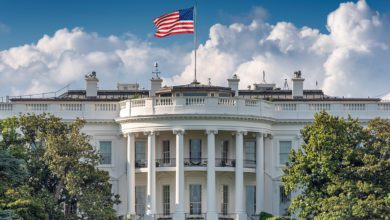
In early 2013, supporters of comprehensive immigration reform said any immigration bill would need to be passed before 1 January 2014 for it to have any chance of becoming law. That assessment proved to be incorrect — but not by much. As we approach the end of January, immigration reform remains alive on Capitol Hill, but the window for passing any immigration legislation is closing rapidly.
Comprehensive immigration reform legislation seemed headed for passage in early 2013. By last July, one comprehensive bill, S. 744, had passed the Senate and several small immigration bills had passed out of the House Judiciary Committee. A compromise seemed possible — even probable — before Thanksgiving.
And then, as often happens in Washington, events got in the way. In early September, Washington was preoccupied by Syria. At the end of that month and through mid-October, Congress focused on the budget, shutting down the government in the process. Then Obamacare took center-stage in November and December, and immigration reform was left behind.
Behind the scenes, the compromises that will be necessary for the Democratic Senate and Republican House to reach agreement have not happened. In general, the Senate is focused on providing a path to citizenship for as many undocumented aliens (or illegal immigrants, depending on your perspective) as possible. The House is more concerned about preventing future flows of illegal aliens (or undocumented persons, if you prefer).
IEEE-USA takes no position on low-skill immigration.
In principle, it should be possible for the two sides to reach an agreement. One could easily see a deal that gives people currently in the country some sort of legal status that is short of citizenship, but which allows them to work and live in the United States. At the same time, Congress could strengthen laws preventing new undocumented people from entering the country or from working once they get here. But this has not yet happened, for a number of reasons.
First, as mentioned, a number of events have distracted Congress and made moving any legislation difficult.
Second, while a deal, in principle, can be visualized, the details of such a deal are tricky. For example, what government services would recently legalized, but not yet citizens, be able to access? What things would disqualify people from their new status? Felonies certainly, but what about misdemeanors? Traffic violations? And how do you secure the border?
Third, both parties see immigration, at least in part, as a political tool to help in the next election. The problem is, the issue works best for political candidates if a bill has not passed, meaning both sides think they benefit from gridlock.
Fourth, and perhaps most importantly, the two parties don’t trust each other. With partisanship running so high, the two sides have difficulty discussing meaningful compromises on any issues, let alone something as emotional as immigration. For example, Republicans don’t trust the Democrats to enforce the border security rules that we currently have, so they are reluctant to pass new laws, which could also be ignored or subverted. Democrats, on the other hand, don’t trust the Republicans to pass a meaningful amnesty bill, so they refuse to consider moving border security bills independently of amnesty.
Beyond the debate over low-skill workers, both the House and the Senate legislation contain provisions that would dramatically change America’s high-skill immigration system. One of the House bills (H.R. 2131) deals exclusively with high-skill immigration. It would create an additional 50,000 green cards for international STEM students in the United States. It would also roughly double the size of the H-1b temporary visa program.
The Senate bill would expand both the green card program (more than the House) and H-1B program (essentially the same as the House). The Senate bill also creates a host of restrictions for the H-1B which will make it much harder for outsourcing companies (although not other companies) to use the visa to replace American workers.
IEEE-USA supports expanding the number of green cards for skilled immigrants, especially STEM graduate students in the United States. We are deeply concerned about the H-1B program and the affect doubling the size of the program will have on the American workforce and the economy’s long-term competitiveness.
IEEE-USA is also concerned about how little attention high-skill immigration has received so far. While low-skill immigration has been the subject of considerable debate, legislators have spent far less time on high-skill immigration. Given the import role skilled immigrants play in our economy, we would hope members of Congress would focus more on this part of the immigration system to ensure that any reforms they pass are beneficial to the entire U.S. economy.
The current thinking in Congress is that immigration may have a chance to be voted on this spring. Republican leaders in the House may wait until after their party’s primaries to move a series of compromise bills, putting the votes in May or June. It is clear that some Congressional leaders, in both parties and both chambers, want to pass an immigration bill this year. It just isn’t clear if they want to pass a bill enough to overcome their distrust of each other.
It is unlikely any serious legislation can get passed after 1 August.
If you have questions about this article, or about IEEE-USA’s immigration policies, please contact me at r.t.harrison@ieee.org.






